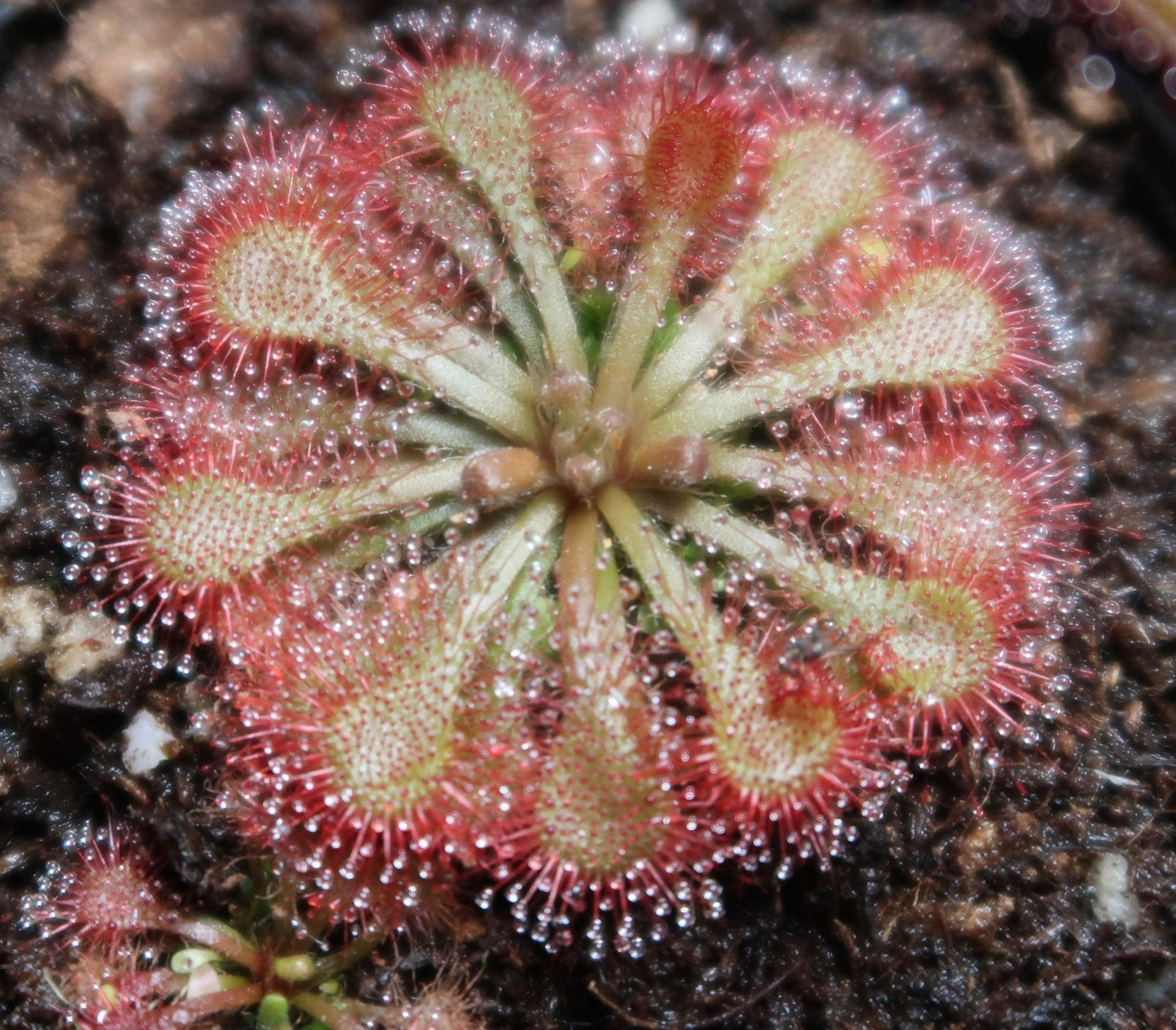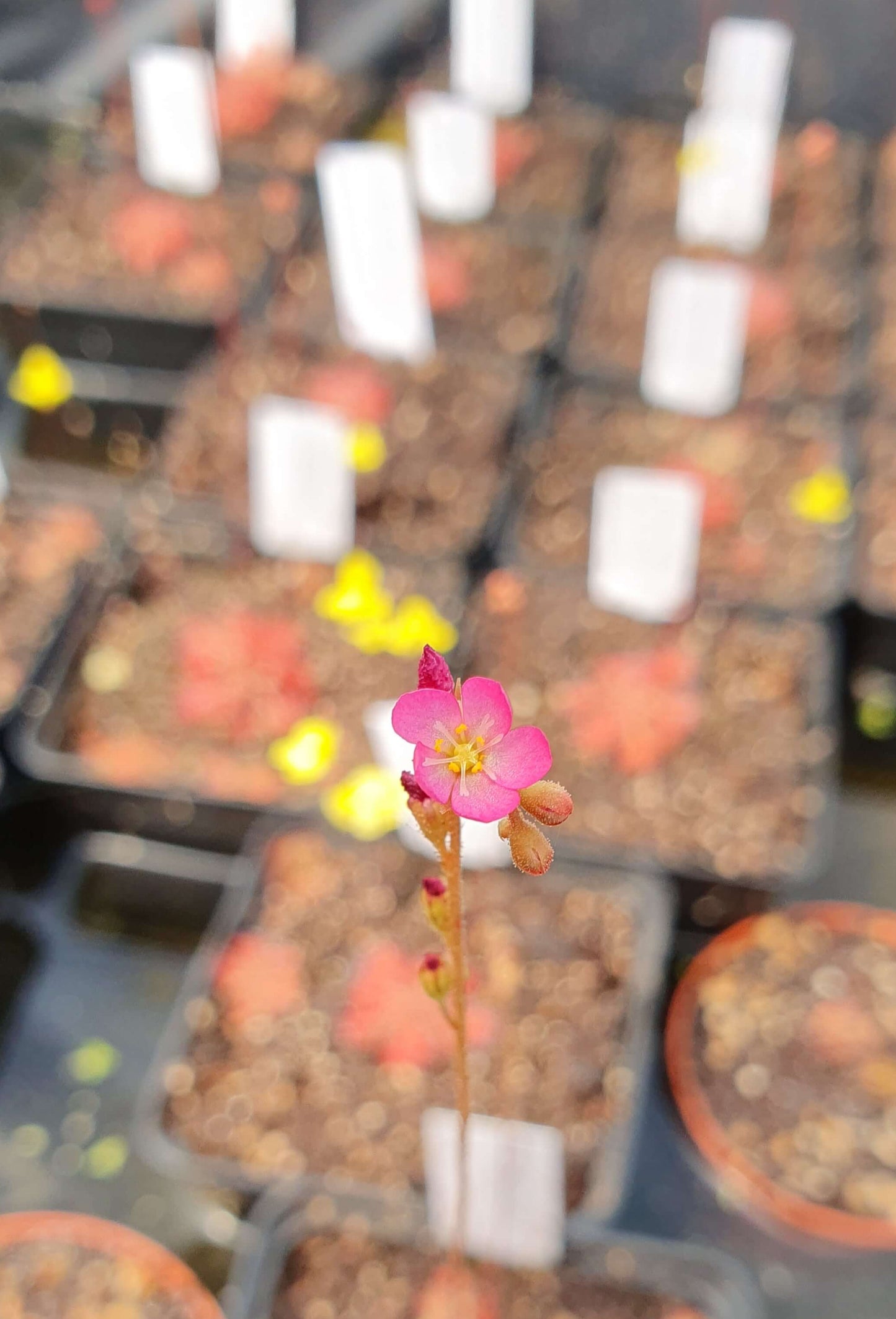carnivorous plant, sundew
Drosera spatulata
Drosera spatulata
Couldn't load pickup availability
Details
Details
Adult plant sent with its pot, original substrate.
Please note that the carnivorous plants you receive may not
be identical in size and appearance to those shown on the
Pictures.
Winter Expedition
Winter Expedition
Adult plant sent in its original pot, rest assured, they will be well protected during shipping. You can see our article on shipping and packaging here
Our maintenance advice
Our maintenance advice
- In winter, keep the substrate moist and frost-free.
- In summer, bathe the pot in 3cm of water or more depending on the height of the pot.
- Watering only with rainwater, osmosis, demineralized (without perfume) or Zerowater (check the water in your municipality)


Description de la plante carnivore
Drosera spatulata is a fascinating carnivorous plant native to Australia, but its presence is not limited to Australia. Indeed, species of the Drosera spatulata complex are also found in New Zealand, Tasmania, southern Asia, China and Japan. This wide geographic distribution has given rise to several closely related species and varieties.
Features
Size: Adult plants generally measure between 2 and 7 centimeters.
Leaves: The leaves are narrow, spatulate, and have red glandular hairs on the surface. These hairs produce a sticky liquid that attracts and traps insects and then digests them.
Flowers: Drosera spatulata produces small white or pink flowers in spring and summer. However, the main beauty of this plant is its leaves.
Maintenance tips :
Temperature: Between 15°C and 40°C, can withstand freezing temperatures down to -5°C, but only for short periods with positive daytime temperatures.
Water: For watering, I recommend that you opt for a capillary method, making sure to constantly maintain a water level of at least 3 cm, using rain, demineralized or osmosis water.
Light: Full sun or near a sunny window to ensure optimal growth. If natural light is insufficient, consider using suitable artificial lighting, including LEDs.
Dormancy: Does not require a rest period in winter. You can learn more about proper care here.
Substrate: Choose a substrate with blond sphagnum peat mixed with perlite. (I recommend a mixture of 50% peat and 50% perlite.) You can also find a special substrate designed for carnivorous plants in our online store here.


